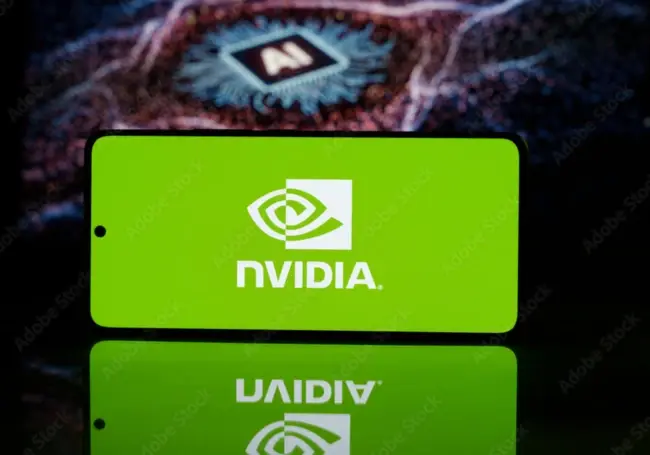Nvidia is recalibrating its approach to the Chinese market. According to Reuters, the company has placed a new order for 300,000 H20 AI GPUs with chipmaker TSMC, spurred by a huge demand from Chinese tech giants including Tencent, ByteDance, and Alibaba. The H20 is a chip specifically designed for the Chinese market by Nvidia, which had faced uncertainty after the Trump administration initially banned its export in April 2025. That decision has since been reversed, reopening a tense and politically sensitive channel in the U.S.-China AI race.
With 600,000–700,000 H20 units reportedly already in circulation and rapidly dwindling, Nvidia's shift comes as a direct response to both economic pressure and market realities. Export licenses are still required for the H20, and Nvidia is currently awaiting approval from the U.S. Commerce Department. The company expects the licenses to be granted soon, although no timeline has been confirmed. Reports of smuggling and booming grey-market repairs for banned GPUs underline just how central the H20 has become to China's AI infrastructure.
Although not as powerful as the flagship H100 or the new Blackwell chips, the H20 was purpose-built to meet export restrictions while catering to the Chinese market. It’s optimised for specific inference workloads, particularly those that demand high memory bandwidth and batch efficiency. In certain scenarios, it can outperform the H100, though not across all workloads.

Why the Nvidia H20 Chip Matters in Today’s AI Race
Nvidia stock hit a third consecutive record high following reports that it placed a significant new order for AI chips bound for China, taking advantage of loosened U.S. trade restrictions. The Nvidia H20 chip was created out of necessity, a product specifically engineered to navigate around U.S. export restrictions. Falling under the radar of stricter sanctions that prohibit sales of more powerful chips like the H100, the H20 offers enough muscle to remain relevant for inference-based AI tasks.
While not Nvidia's top-tier hardware, industry experts say the H20 is surprisingly efficient, often outperforming even the H100 in inference-specific workloads. That’s due in part to how Chinese firms like DeepSeek are pairing these chips with cost-optimised AI models to stretch performance.
According to a report by SemiAnalysis, roughly 1 million H20 chips were sold in 2024. This latest order of 300,000 units with TSMC represents a massive strategic restock almost accounting for nearly a third of last year’s total volume.
China’s Growing Appetite for AI Chips
China is rapidly positioning itself as a global leader in artificial intelligence (AI), driven by a combination of government backing, industry investment, and a maturing innovation ecosystem. According to a report by the World Economic Forum, the country aims to expand its core AI industry to more than $140 billion by 2030, with AI-related sectors projected to reach a staggering $1.4 trillion in value.
Over the past decade, China has laid a foundation to support this ambition. It has emerged as one of the few nations capable of advancing AI transformation at both speed and scale. Currently, the country’s AI sector exceeds $70 billion, with more than 4,300 AI-focused companies contributing to a growing pipeline of technological breakthroughs.
Three major forces are contributing to this transformation:
- Strong Government Support: The Chinese government plays a central role in the nation’s AI development, demonstrating a high level of strategic foresight and execution. National policies and five-year plans have prioritised AI as a pillar of economic and technological advancement.
- Ecosystem Enablers: China has built a thriving innovation ecosystem that fosters collaboration between academia, startups, and tech giants. This ecosystem is further amplified by a cultural shift toward embracing emerging technologies, which is enabling mass adoption at scale.
- Industrial Applications: Major Chinese enterprises are heavily investing in AI to address sector-specific challenges, from manufacturing and healthcare to logistics and finance. These targeted investments are transforming AI from a theoretical concept into a practical engine of productivity and efficiency.
Yet, China’s rapid AI growth also exposes several underlying challenges, ranging from talent shortages to data governance and global collaboration. The World Economic Forum emphasises that the future success of China’s AI strategy will depend on cultivating an open and inclusive ecosystem. This includes improving international cooperation, bridging the gap between public and private sectors, and ensuring the ethical deployment of AI technologies.
Chinese firms have aggressively stockpiled H20 chips before the April ban, underscoring how important these components are. With signs of continued restrictions on the horizon, buyers are now scrambling to secure more supply before the door shuts again.
Domestic players like Huawei (Ascend series) and Alibaba (custom AI chips) are attempting to catch up, but performance gaps remain significant. For now, Nvidia is still the preferred provider, especially due to the software ecosystem it brings, a key factor in keeping Chinese developers locked into its stack.

The Role of TSMC in Nvidia’s Supply Chain Strategy
TSMC (Taiwan Semiconductor Manufacturing Company) is Nvidia’s main manufacturing partner for AI chips, including the H20. This new order illustrates how important TSMC remains in Nvidia’s ability to scale globally, especially under regulatory pressure.
With production lead times as long as nine months, CEO Jensen Huang had previously said that restarting H20 manufacturing would only happen if customer demand justified it. That moment appears to have arrived.
Earlier this month, TSMC reported a record 61% year-over-year profit surge. While striking, the jump came as little surprise to analysts. From its base in Taiwan, TSMC produces the vast majority of the world’s most advanced chips—particularly those powering AI systems—where demand continues to soar.
However, such large-scale orders raise questions about capacity management at TSMC and whether this might delay production for other Nvidia lines or clients. The H20 order also reaffirms Nvidia's commitment to servicing the Chinese market, even if it means diverting foundry capacity.
U.S. Export Controls and Their Impact on Nvidia’s China Sales
Despite the renewed order, Nvidia’s operations in China are anything but straightforward. Export licenses are still required for the H20, and as of reporting, the U.S. Commerce Department has yet to approve this latest shipment.
The H20 exists in a legal and strategic grey area. While technically compliant, it remains controversial. Twenty U.S. national security experts, including veterans from both the Bush and Trump administrations, recently urged Washington to reinstate the H20 ban, calling it “a potent accelerator of China’s frontier AI capabilities.”
The stakes for Nvidia are enormous. Following the April ban, the company warned of a possible $5.5 billion inventory write-off and up to $15 billion in lost revenue. CEO Jensen Huang has openly disagreed with calls for a complete ban, arguing in an interview with CNBC’s Jim Cramer and said:
“That’s probably the most important strategic reason to be in China, because there are so many developers there... we prefer it to be the American technology stack.”
His broader concern? That the U.S. may be pushing Chinese firms further into Huawei’s arms, a long-term risk that Nvidia cannot afford.

U.S. vs China: The Race for AI Superpower Status
The U.S. and China are locked in a high-stakes competition for dominance in artificial intelligence. The U.S. currently leads in cutting-edge hardware design, foundational models, and AI research, but China is rapidly catching up, driven by state funding and a massive talent pool.
- The U.S. controls over 70 per cent of high-end AI chip IP via firms like Nvidia, AMD, and Intel.
- China produces over 60 per cent of the world’s AI-related patents and has launched multiple national initiatives to reach AI leadership by 2030.
- According to the Stanford AI Index 2024, China published more AI research papers than any other country and ranked second globally in the number of highly cited AI papers.
While the U.S. leverages export restrictions to delay China’s hardware gains, Chinese firms are investing billions in domestic AI accelerators and software alternatives. Platforms like DeepSeek and Huawei’s PanGu models are designed to reduce dependence on U.S. technology while scaling local AI capability.
What This Means for the Global AI Chip Market
This latest move from Nvidia is not just about China—it’s about defending global market share in an increasingly fractured tech landscape. With China representing a $50 billion AI market, according to Nvidia CEO Jensen Huang, losing that ground could recalibrate the entire GPU hierarchy.
Competitors like AMD and Intel, as well as rising Chinese chipmakers, are closely watching Nvidia’s every move. TSMC’s production capacity is now more tightly contested than ever, and the backlog could ripple through supply chains.
At the same time, regulators worldwide are beginning to scrutinise AI hardware more aggressively. Nvidia’s ability to maintain compliance without ceding performance or market dominance will likely define the next phase of this global AI chip race.

Strategic Gamble or Tactical Win?
Nvidia’s 300K H20 chip order is a calculated gamble, a blend of risk management, strategic positioning, and regulatory navigation. While export compliance remains fragile and U.S. political backlash is mounting, the short-term reward of maintaining a presence in China may outweigh the long-term risks of disengagement.
Chinese firms are racing to integrate hardware like the H20 with domestic software ecosystems. DeepSeek's growing prominence, especially its ability to optimise AI models for Nvidia's inference chips, reflects how integral local players have become in sustaining U.S. hardware relevance. If Nvidia loses this foothold, it risks ceding long-term developer mindshare to rivals like Huawei.
Meanwhile, the race for AI superpower status between the U.S. and China is accelerating. Hardware isn’t just about chips—it’s a conduit for control, influence, and future market leadership. Nvidia’s decision isn’t just commercial; it’s geopolitical.
The next 6–12 months will be important.
Watch for:
- Whether the U.S. issues the necessary export licenses.
- How Chinese demand evolves.
- Whether domestic chipmakers gain traction.
In the broader geopolitical contest over advanced technology, the H20 has become more than just another chip; it’s a calculated move in a high-stakes game. For Nvidia, it reflects a determination to maintain its position in a key market. For investors, it highlights how policy shifts, trade tensions, and supply chain pressures can quickly ripple through earnings projections and global market confidence.







Comments ( 1 )
Shubhangi Dua
30/07/2025